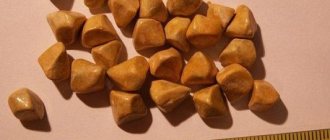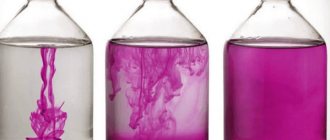In many ancient states where medicine was developed, people believed in hidden connections between various organs. Some doctors have tried to find answers about a person's health by examining their tongue. Science has evolved, and many views on diagnosing diseases by language have changed, but even modern doctors are finding evidence of this connection.
Modern doctors believe that certain properties of the tongue do not indicate an accurate diagnosis, but they help to find out the direction of diagnosis
. So from time to time it is advisable to look at this organ and consult a doctor if its color or shape changes.
Diagnostic signs
If vital processes are balanced, the body functions without failures, the human tongue has a healthy appearance. This is manifested in its smooth, velvety surface, uniform pink color and transparent coating of saliva. There should be no discomfort, burning, tingling or lack of sensitivity in any areas.
In the human body, pathologies are determined by the following characteristics:
- Color and its uniformity on the surface of the tongue.
- Smell, color and consistency of plaque.
- Relief.
- The shape of the organ and the lines in the middle.
- Movements.
- Sensation of taste.
Diagnosis of health using the tongue should be carried out as follows: stick it out as much as possible, look in the mirror and analyze all the indicated characteristics. The sensations of taste and touch, as well as the accumulation of plaque, should be monitored throughout the day. All features that were identified should be compared with text descriptions.
If the patient tells the doctor about changes in health status and language diagnostic results, he is prescribed an examination to clarify the diagnosis.
Correspondence of tongue zones to internal organs
Ancient Chinese doctors determined that each section of this muscular organ is associated with a specific element. Modern medicine has established how the areas of the human tongue are associated with diseases of the internal organs. The correspondence is shown in the table:
For a more informative diagnosis, it is necessary to take into account both the general condition of the tongue and the condition of its individual sections. It is important to understand that the doctor draws conclusions not only from indirect external changes, but also from the results of laboratory and instrumental studies, and when making a diagnosis, one should rely more on conclusions confirmed by analyzes.
Diagnosis by color: what does the color of the tongue mean?
The color of this organ partly depends on the shade of its own tissues, and partly on the plaque accumulated on it. By studying the color of the tongue, you can determine what this sign indicates and go to a therapist to check your assumptions. Below is a comparison of the color of tongue coating and diseases that may be associated with it:
Presence of stains
In some diseases, the color of the tongue is uneven; distinct or unclear spots and stripes may be observed:
Diagnostics by form
The definition of a human disease by language is also based on an analysis of its outline and shape of the midline:
It is difficult for a person without medical education to determine from photographs or descriptions which organ shape is normal for him. Thus, a thick tongue can be mistaken for swelling. Therefore, you should not draw conclusions about your health status and treatment on your own.
, it is better to consult a doctor and tell him about your assumptions.
Nature of the relief
Normal taste buds form a smooth, velvety surface. By the relief of the tongue you can determine the disease in an adult or child, how to do this:
Movement and sensitivity
Normally, a person moves his tongue without difficulty, without trembling or muscle pain.
. If there are diseases of the nervous system and neurasthenic syndromes, characteristic trembling appears, and with strokes, patients find it difficult to chew and talk. With hemorrhages in the brain, both the sensitivity of taste buds and the sense of touch on surfaces are partially or completely absent.
The causes of trembling can be not only neurological, but also endocrine. The progression of brain diseases in later stages leads to a decrease in muscle size.
If uncharacteristic sensations or burning occur, you should contact a neurologist. If only the surface of the organ hurts, it is covered with plaque, turns pale, you need to show it to the dentist, this may be a sign of inflammation of the mucous membrane - stomatitis.
The function of taste buds is also used in diagnosing diseases by the tongue; it can change with burns, smoking or hormonal imbalances and is often accompanied by the accumulation of plaque.
In pregnant women, a change in taste preferences and aversion to normal food may appear in the first trimester or persist for the entire 9 months. For some women, this feature is the first sign of successful conception.
Raid
A healthy person may develop a small amount of bacterial plaque in the morning. When brushing your teeth, it can be easily removed and does not cause trouble during the day.
If a dense white, cheesy coating accumulates on the surface of the mucous membrane, which is difficult to remove, this is a symptom of candidal stomatitis.
- The yellow color of plaque indicates problems with digestion, abuse of strong coffee, and smoking. Such a tongue can also occur with the development of glossitis. In this case, purulent inflammation is present.
- Dark brown or black plaque is a sign of liver disease, dehydration, and dysentery. The appearance of black fibers on the base of the tongue is a sign of one of the forms of glossitis.
- Sticky, mucous deposits, which are difficult to remove and cause an unpleasant taste in the mouth, appear when food stagnates, digestion is disrupted, and mucus accumulates.
- Plaque with foam and small air bubbles appears with pneumonia and bronchitis.
- A yellow-green plaque occurs against the background of diseases of the digestive system, while bacteria cover not only the tongue, but also the teeth, and the breath smells unpleasant. Deposits are difficult to remove and quickly form again.
The thickness of the plaque can be used to judge the severity of the disease. The denser and thicker the deposits, the more serious the problem.
Prevention of tongue diseases
To reduce the risk of diseases of the tongue itself and other organs, you need to monitor your diet, daily routine, and have less contact with infectious patients. Caring for the tongue itself should be no less thorough than caring for your teeth.
Accumulating plaque, especially in sick people, is a place for mass reproduction of bacteria and fungi. If it is not removed in time, it will become a source of infectious pathogens that can penetrate any part of the body.
When cleaning the oral cavity, it is useful to use toothbrushes with a ribbed back surface to clean the tongue from plaque, or special spoons and scrapers. But they must be used carefully so as not to damage the taste buds and mucous membrane. After cleaning, it is advisable to use pharmaceutical rinsing solutions or prepare homemade herbal decoctions.
Is it worth diagnosing by tongue?
Doctors have been studying the question of what diseases can be identified by language for several hundred years. The results of research by ancient and modern scientists show that this connection exists, but it must be properly understood and assessed. If a healthy person has irregularities or the color of the plaque has changed, this phenomenon may be the very first symptom of a disease that will manifest itself in the future with other abnormalities.
There is an assumption that the imprints of the disease appear on this organ several days before its clinical signs, but you should not use diagnosis by a person’s tongue for further self-medication. This is a whole science, and only a good specialist can understand it. Treatment can begin only after a full examination and establishment of a correct diagnosis.
A healthy human tongue should be pink, with a matte tint. A slight morning bloat, which decreases after eating, is also within normal limits. Alarm should be caused by the appearance of heavy plaque, usually resulting from an inflammatory process, or a change in the color of the back of the tongue. Sometimes you can see a blue tongue in a person, the reasons for this may be different. The most harmless of them are culinary or natural dyes; simply by eating some berries you may notice a change in the color of your tongue or lips. However, the cause is not always harmless; most often, a change in the appearance of the tongue is caused by various pathologies, including diseases of the stomach, pancreas, liver, etc.
Everyone can check the state of the language and draw certain conclusions on their own. However, for this it is necessary to know exactly what indicators and factors tell us about certain changes in the state of the body.
Variations in the color of the tongue can be in a very wide range: whitish, brownish, blue, gray, yellowing may be observed. By the way, if a child suddenly has a strange tongue color, you should not immediately raise the alarm. In most of these situations, it turns out that the unusual coloring is caused by something quite ordinary that got into his mouth. These could be felt-tip pens, low-quality drinks, chewing gum, caramels
. In adults, the cause may be recently drunk coffee or excessive smoking.
The next thing you need to pay attention to is the structure of the plaque on the tongue. Knowing what a healthy tongue looks like, you can easily notice the following differences from it:
- Dryness.
- Heterogeneity of plaque.
- Oiliness.
- Looseness.
- Density.
Be sure to set the thickness of the plaque, which is an extremely important parameter. If, during a visual examination, an increase in the degree of plaque formation is noticed, through which the surface of the tongue ceases to be visible, then control over the state of your body must be tightened. If the plaque condition does not improve within 24 hours, it is recommended to visit a doctor and undergo an examination.
Spots may appear on the surface of the tongue, the localization of which makes it possible to determine the location of the source of pathology in the body.
The degree of plaque pain is determined by the ease of its removal. In a healthy person, the layer of plaque is translucent, can be easily removed during morning hygiene, and does not appear during the day. If deposits appear as a result of a malfunction of any organ, then it is almost impossible to remove them completely; moreover, they gradually thicken, acquiring a color characteristic of the underlying pathology.
Normal plaque has a slightly whitish tint, which practically does not affect its transparency. It is easy to remove, has no odor, and the tissues of the tongue are visible through it. In cold weather, slight yellowing may appear.
What to look for when examining your tongue?
There are a number of characteristics that can tell about the state of the taste organ and the whole organism as a whole. To understand whether they are normal, you need to know exactly what a healthy tongue looks like. To do this, just look at his photo in thematic directories. They usually contain an image of the tongue, which can be used to determine whether a person has a particular disease.
The tongue of a healthy person is always colored in a natural pinkish tint. This applies to both adults and children.
Any change in the normal color of the organ that is responsible for the perception of taste may indicate a problem in the functioning of the internal organs or the entire system.
It must be remembered that a change in the color of the tongue is not always a sign of a pathological process that occurs inside the human body. It may turn red, orange, blue or any other shade if it has recently come into contact with dyes. Therefore, before drawing conclusions, you should find out what the person ate.
Humidity
Normally, the tongue should be moist. This is his usual state. If a person complains of excessive salivation, the doctor may suspect the development of a disease that is accompanied by just such a symptom. Drying of the mucous membrane of the mouth and tongue is also not a good sign.
Raid
Normally, a small coating may appear on the tongue of a person who is not seriously ill. So there is no need to worry about this. It usually occurs during night sleep. In the morning it is simply scraped off the tongue.
It does not cause any discomfort during the day.
If a fairly noticeable layer of dense mucus accumulates on the surface of the taste organ, the consistency of which resembles cottage cheese, then you should think about your health. This sign warns of problems in the body.
Form
Everyone knows what shape and color a normal tongue has. Therefore, you can understand that this standard parameter differs from the current indicator even without consulting a doctor.
A normal tongue should show no signs of swelling. Small papillae are clearly visible on its surface. Health problems are considered if the organ is enlarged in size, its tissues are unnaturally smoothed, and teeth marks are visible on the sides.
Taste perception
A healthy adult or child will be able to determine the taste of the product that enters his mouth without any problems. If his body is susceptible to infectious inflammation, then this sensation is greatly disturbed. Often the food becomes completely tasteless.
Roughness
If you try to touch a normal tongue from the front and back, it will seem a little rough. This is quite natural. This sensation is created by small papillae that can be seen on the surface of the organ. If the upper part of the tongue becomes smoothed, then they talk about pathology.
Types of raids
The plaques that occasionally form on the surface of the tongue are very diverse. They differ in color, outline, and localization. Moreover, the color of the tongue and the disease are often directly related. In infectious pathologies, a dense whitish coating is usually observed that covers the entire surface. There is almost always a simultaneous increase in temperature.
If white deposits appear on the middle part of the tongue, and cracks form on the sides, then some pathological lesions of the stomach or intestines can be suspected. Having noticed the first manifestations, it is recommended to change the diet to a more easily digestible one, limiting salt and fat. The appearance of pain indicates the need for emergency examination by a doctor.
White deposits that appear on the front of the organ are evidence of problems with the respiratory system, with the most common cause being tobacco smoking. At the same time, sometimes a person’s speech changes tonality. Developing dysbacteriosis often leads to a fungal infection, manifested in particular by the appearance of whitish spots on the entire surface. Quite often it develops as a result of improper treatment with antibiotics.
An alarming signal is the appearance of a red and white spotted coating. This is what the symptoms of scarlet fever look like. Having noticed such formations, you should immediately seek medical advice; a timely and effective treatment method will allow you to quickly get rid of the pathology without any consequences.
If your tongue turns yellow, you should pay attention to the amount of deposits. A small amount of yellowish plaque should usually not cause concern. However, the intensive formation of a thick layer allows one to suspect the presence of foci of inflammation inside the gallbladder. In this case, you should pay attention to the presence of unpleasant sensations under the ribs on the right side. These are the signs of developing cholecystitis.
A burgundy coating over time turning into a brown crust often indicates food poisoning. If it is small and passes quickly enough, then coloring can occur due to the use of food (natural) dyes, for example, chocolate or coffee. The prolonged presence of such deposits usually indicates dysbacteriosis.
What does a coating on the tongue mean?
According to Eastern wisdom, plaque accumulation occurs when there are many problems. In healthy people, this organ is transparent, with a pinkish tint visible through it. If the layer is too dense, the shade and texture do not show through.
Signs of illness in the tongue are closely related to the manifestations of various diseases. This phenomenon is observed with a diseased liver, sore throat, and digestive problems.
If a person has a whitish coating, then most likely the manifestations of the underlying pathology have not yet manifested themselves. The disease itself is only at the initial stage of progression. With grayish content, the manifestations may not be so intense, but they are already making themselves felt.
The accumulation of plaque on the tongue indicates the presence of many problems.
White color characterizes the presence of disorders in the stomach or intestines. Most likely, these are not very serious conditions that can be corrected with the help of special nutrition. It’s worse if the plaque tends to change and darken. The color of the tongue in stomach cancer is grayish-whitish. If you notice this phenomenon, immediately contact a specialist.
Yellowness indicates the accumulation of bile in the gallbladder and liver dysfunction.
A greenish tint may indicate an exacerbation of gastrointestinal diseases, problems with bile passage.
A black or brownish tint occurs with very serious pathologies of the digestive system. Black color is characteristic of dehydration or problems with the pancreas.
A bluish color indicates the development of a purulent process in the peritoneum. If the phenomenon is accompanied by high fever and pain, this should greatly alert a qualified doctor.
Blue tongue
Some people notice that their tongue has a blue tint. Naturally, this attracts attention and an explanation needs to be found as to why this happens. A blue tongue in a person, if it is not colored by berry juice or other dyes, is a fairly important signal of serious health problems.
Why can the tongue turn blue? This coloration may appear as a result of any serious problem in the functioning of the cardiac system. This most often occurs in heart failure. Cardiopulmonary failure with circulatory problems is especially clearly indicated by the localization of cyanosis on the lower parts of the tongue. In this situation, it is advisable to analyze the general condition, summarize all unpleasant sensations and contact a medical specialist for examination.
If cyanosis appears on the upper plane, then this is almost accurate evidence of the onset of progression of cardiovascular failure, while the remaining symptoms (pain, weakness, feeling of heaviness behind the sternum) may not yet appear. Timely response and implementation of a set of medical measures can often prevent a heart attack.
The tongue may also have a bluish tint. In addition to some disruption of blood circulation, this may reflect the development of the initial stages of scurvy. If a blue plaque suddenly appears in the area located directly in front of the pharynx, then the cause must be sought in a violation of renal activity. Normalization of the functioning of the adrenal glands (proper production of hormones) usually leads to the disappearance of such spots.
Quite rare, but sometimes occurs, a bluish tint appears due to poisoning with heavy metals, for example, mercury. Only a specialist can identify such a lesion after conducting a serious examination.
Changing tongue color
As mentioned above, the color of the tongue can indicate health problems. It could be like this:
- Red is a clear sign of cardiac dysfunction, blood disease or lung disease.
- Raspberry – warns of intoxication of the body and the development of infection within it.
- Dark red – intoxication or problems with the kidneys.
- Purple - a symptom of concern when lung or blood diseases appear.
- Bluish - indicates impaired blood circulation and poor heart function.
- Gray is a sign of a digestive system disorder.
- Black – warns of cholera infection.
Sometimes the tongue appears pale, almost discolored. In this case, they talk about exhaustion of the body. This symptom can also accompany the development of anemia, gallbladder and liver diseases.
- What do pimples on the tongue mean?
- Signs of oral syphilis;
- Inexpensive, extremely effective remedies for the flu -.
Blue plaque in a child
Every young mother needs to make a daily morning examination of her child’s mouth a mandatory procedure. It should be borne in mind that a small whitish layer, which is easily removed by hygiene procedures or disappears on its own after eating, is the norm. But the appearance of a thick layer or a change in color should cause serious concern.
It is especially necessary to react quickly to a child’s blue tongue. Why should the blue tint of the tongue attract such increased attention? This shade serves as one of the main signals that can reflect the occurrence of a number of pathological problems that begin to progress in the important organs of the child. With such a change in color, problems with the respiratory system, heart (arrhythmias, angina pectoris, etc.), circulatory system, and kidneys can be suspected.
In such a situation, parents are advised to immediately consult a doctor. Young children are not always able to fully describe the sensations that arise, and young parents are not always able to correctly identify what the child is describing. That is why such an important signal should encourage parents to visit a medical facility. Another reason for a blue tongue in a small child may be disorders of the nervous system. With such problems, seizures or cerebrovascular accidents are usually observed simultaneously.
Often, when examining a patient, doctors pay attention to the condition of his tongue. It, as an indicator of the health of the body, can tell about the presence of diseases of systemic organs, even if a person does not feel pronounced symptoms. So, a burgundy tongue may indicate kidney problems. But more often, a change in the shade of the tongue occurs due to inflammation of the papillae that form its surface. You will learn from the article why the tongue can become dark burgundy and how dangerous this is.
Each area of the tongue is associated with an important internal organ
Suzanna Kirina
It is dangerous if the tongue has become dark in color - this is a sign of serious problems
One of the easiest ways to diagnose the body is to carefully examine your tongue. This organ can provide a lot of information about our condition; it is not for nothing that it is called a health indicator. Colored plaque, uneven coloring, increase in size, the presence of grooves and cracks - all this can be a warning sign. Moreover, what is especially important, signs of diseases are displayed on the tongue much earlier than the first symptoms appear.
how to independently carry out “language” diagnostics with family doctor Alexey Maksimenko and the highest category therapist Natalya Gordienko.
Burgundy tongue - normal or pathological?
The tongue of a healthy person should be light pink; a small amount of whitish coating may be present on its surface. When palpated normally, the organ should be painless and soft. On the surface, in its center, there is a shallow fold.
This is what a healthy tongue looks like.
The tongue is a muscular organ covered with a mucous membrane. It has no bones, which ensures its mobility in the oral cavity and allows it to perform its functions:
- participate in articulation;
- take part in the process of chewing food and moving the food bolus.
The organ is covered with numerous taste buds - papillae. They have an unequal shape, for example, on the surface of the tongue, closer to the throat, you can distinguish large groove-shaped papillae, and if you look closely at the tip, thin and small filiform papillae are clearly visible on it. There are 4 types of taste buds, and each of them recognizes specific tastes.
We have described the appearance of a healthy muscular organ. If, during an examination of the oral cavity, you find any discrepancies, you should consult a doctor for advice. Dense plaque, cracks, burgundy spots on the tongue, ulcers or any other symptoms may indicate the development of pathology. In this case, the disease can affect both the tongue itself and other internal organs.
Burgundy tongue with glossitis
One of the main reasons is glossitis.
One of the main reasons why the tongue may become burgundy is an inflammatory disease - glossitis. It has several forms, and therefore the symptoms may vary. may manifest itself:
- pain, burning, itching;
- swelling of the tongue, its swelling, changes in its mobility;
- plaque of various shades;
- changes in the amount of saliva produced;
- change in taste perception;
- unpleasant odor coming from the mouth;
- the presence of erosions, ulcers, and irregularities on the surface of the organ.
A bright burgundy tongue may be a symptom of a type of disease called Gunter's glossitis. At the same time, the surface of the tongue becomes as if varnished, glossy. Patients with Gunter's glossitis complain of a burning sensation and pain in the tongue.
Inflammation of taste buds
The cause of a burgundy tongue may be inflammation of the taste buds. As a result of this, there is an increase in their size, a change in shade to bright red, and a decrease in sensitivity. Taste buds can become inflamed for several reasons:
- thermal burn (consuming very hot or too cold foods and drinks);
- chemical burn (contact with acid or alkali);
- injury to the surface of the tongue by mechanical means (solid food, fish or meat bones, when cleaning the tongue with a sharp scraper);
- reflux esophagitis - reflux of gastric juice into the esophagus, and from there into the oral cavity, damaging the taste buds;
- frequent vomiting, in which the mucous membrane of the tongue is irritated by hydrochloric acid;
- injuries received during the process of resorption of food or tablets;
- injury to the papillae by an incorrectly positioned crown or cusps of the teeth due to an abnormal bite;
- infection.
Scarlet fever
Another disease that can cause a child to have a burgundy tongue is scarlet fever. At the early stage of the disease, the muscular organ has a whitish color due to a layer of plaque, but at the height of the disease, the color of the tongue changes to deep red, burgundy. The papillae on it are enlarged and clearly visible.
This is what the tongue looks like during scarlet fever.
The causative agent of the disease is streptococcus, transmission of the disease occurs by airborne droplets. Scarlet fever is a childhood disease, most often affecting children under 12 years of age. However, adults can also get this disease. If you find a child’s burgundy tongue like in the photo, rush to show the baby to the doctor to determine the exact cause of the alarming symptoms.
Important: scarlet fever is a contagious disease. A person with scarlet fever is dangerous to others for 22 days after the onset of the disease.
Symptoms of scarlet fever are high temperature, due to which the child may be lethargic, weak, and capricious. Older children may complain of headaches, nausea, and discomfort when swallowing food, drinks, and even saliva. But the main symptom of the disease is still a specific skin rash that appears on the second day after infection.
Diseases of internal organs
It is believed that if the tongue turns a rich red color, this may mean that there is a problem with the heart, kidneys or lungs. The dark red or burgundy color indicates the chronic form of these diseases.
Not every one of us regularly examines our tongue, but in vain! This organ, by its appearance, can warn of the development of various diseases of the body. If you notice a symptom such as a burgundy tint of the tongue, try to consult a doctor without delay! Be healthy!
To maintain proper oral hygiene, it is necessary to clean, in addition to the teeth, the surface of the tongue. It may not be noticeable to the naked eye, but microscopic food particles accumulate on it. If they are not cleaned, this will cause an undesirable effect, such as bad breath, and pathogenic microorganisms will begin to multiply, which, if they get into a wound or microcrack, can cause inflammation.
It should be noted that a thin layer of white plaque on a person’s tongue cannot do much harm and can be easily cleaned with a regular brush, but if it is blue, then you can only find out the reason why this symptom appears from a doctor and it can be quite severe.
Tongue care rules
Like any other organ, the tongue needs regular care. People who carefully monitor oral hygiene should not forget about this.
Regular tongue cleaning is a procedure that prevents pathogenic bacteria from multiplying in large numbers in the mouth, and also allows you to preserve taste. A clean organ perceives them more clearly, since all its receptors are free from the remnants of food already eaten.
To prevent the active growth of pathogenic microflora in the oral cavity, it is necessary to clean not only the teeth, but also the tongue. This procedure allows you to achieve:
- Getting rid of a large number of pathogenic microorganisms that can cause all kinds of diseases of the oral cavity.
- Improved taste when eating and drinking.
- Eliminating bad breath.
- Normalization of the functioning of internal organs and systems through regular massaging of the tongue receptors.
- Preventing the formation of tartar on teeth.
To properly clean your tongue without causing any harm to its mucous membrane, it is not necessary to use special devices. A regular toothbrush can handle this task quite well. Many modern models have a brush that needs to be passed over the surface of the organ several times after or before brushing the teeth. You can use a spoon as a replacement for a brush.
On average, a person spends no more than 1 minute cleaning his tongue. Everyone should get into the habit of carrying out such a procedure in order to reduce the risk of developing oral diseases, and also always have the opportunity to assess the condition of the organ and, if a problem is detected, immediately consult a doctor.
Blue plaque in a child
Parents always try to find out as much information as possible about diseases and methods of treating them in order to keep their child healthy, and this also applies to the blue coating on the child’s tongue and the reasons why it appears are actually identical to those in adults and they are:
- Disturbances in the respiratory system;
- Problems with the heart and circulatory system;
- Pathologies of the kidneys and adrenal glands.
A child who cannot yet speak expresses the discomfort by screaming and crying, but some diseases, for example those related to the heart, may not manifest themselves in the early stages and it is especially important for parents to do a regular full examination of the baby in order to prevent possible pathologies.
In addition, a blue tongue in an infant is often associated with disruptions in the nervous system, which result in seizures and impaired cerebral circulation. For this reason, after detecting such a symptom, you need to immediately show the child to a pediatrician for further examination and treatment.
Features of the raid
In order to prevent the development of serious pathologies, it is necessary to do an independent examination using a mirror, but for this you need to know what is a pathological deviation on the surface of the tongue.
The disease can be identified based on the following nuances:
In a person who has no pathologies in the body, the tongue has a thin layer of translucent white coating, through which one can see the taste buds and the pink tint of the surface of the organ itself. For this reason, it is important to do a self-examination to see the beginning of pathological processes.
Thus, a blue tongue may be a symptom of a dangerous disease or some malfunction of the internal organs, so immediately after its detection it is necessary to be examined, especially if it concerns a child.
Good afternoon, I would like to know the reasons and possible diseases that can cause a person’s tongue to turn blue.
Normally, the back of the tongue is pink and matte in color. A coated tongue, which is observed in the morning and decreases at the end of the day and after meals, is also considered normal.
If a heavy coating appears on the tongue, this is usually the result of an inflammatory process, as a result of which self-cleaning may be impaired.
The most common causes are diseases of the stomach, esophagus, liver, pancreas, etc.
It is worth paying attention to whether your tongue changes its blue color to its normal color. If this happens quickly and spontaneously, then there is a possibility that food coloring may be the cause of the blue discoloration. Otherwise, you should consult a doctor.
With a disease such as rhomboid glossitis, the posterior portion of the mucous membrane of the tongue is affected. In this case, there is a slight compaction and a change in the color of the affected area to bluish. The disease is usually asymptomatic, more often in middle-aged male smokers.
Symptoms of a disease such as anemia (lack of iron, folic acid, vitamin B12 in the blood) are a blue tongue and pale skin.
With cyanosis, which causes a bluish tint of the skin and mucous membranes due to a reduced level of oxygen in the blood, a change in the normal color of the mucous membrane of the tongue to blue is also observed. There are two types of cyanosis:
- Central. Bluish discoloration of the lips, tongue, conjunctiva.
- Peripheral cyanosis. Bluish discoloration of the skin of the hands or feet, as well as nails.
Peripheral cyanosis is a local change, while central cyanosis indicates the presence of diseases of internal organs, such as cor pulmonale (changes in the right parts of the heart - their increase due to increased blood pressure), hypoxemia (low oxygen content in the blood due to circulatory disorders).
These diseases are caused by chronic disorders of the respiratory system, which increases or provokes heart failure.
In addition, blue tongue can occur in patients with renal failure (pathology of the kidneys with impaired formation and excretion of urine).
As you understand, you should not self-medicate and you must promptly seek help from your attending physician, who will make the correct diagnosis and select treatment for you.
General dentist
Visual inspection
Normally, the tongue is rough to the touch, and the papillae are clearly visible on it. If a smooth surface or discoloration occurs, chronic diseases of the gastrointestinal tract and cancer can be diagnosed.
The appearance of cracks and deep grooves is caused by gastrointestinal diseases and nervous disorders. There are also congenital pathologies - folded tongue. Depressions may appear after the teeth (imprints), this happens with significant swelling.
If your tongue looks like a map, you need to see a dentist; this is a sign of stomatitis, glossitis, or helminthic infestation. Epithelial cells slough off unevenly and regenerate, forming a pattern.
A disease such as pellagra is characterized by the formation of a pattern resembling a chessboard. The disease is caused by a deficiency of nicotinic acid in the body. The mucous membranes are covered with a dark gray coating, and numerous cracks appear on the surface.











